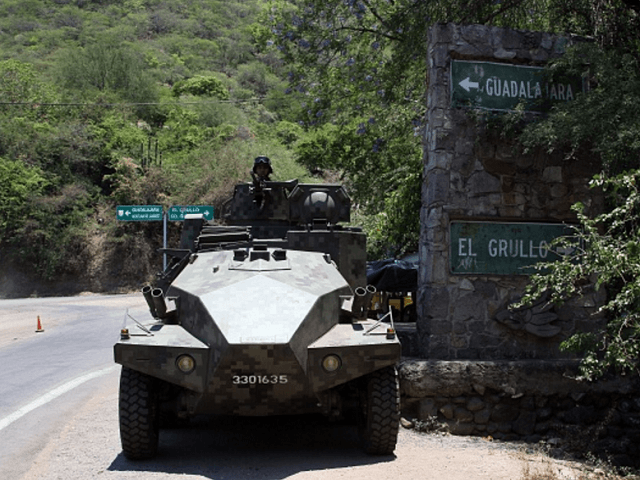Mexican authorities announced on December 4 they have detained the brother of the Cartel de Jalisco’s notorious leader. Formally known as the Cartel de Jalisco Nueva Generación (CJNG), the drug cartel is one of the fastest growing—and most violent—criminal organizations in Mexico.
According to the Washington Post, Federal Police Commissioner Enrique Galindo said soldiers detained Antonio Oseguera—brother of CJNG leader Nemesio Oseguera—on December 3 near the western Mexican city of Guadalajara in the state of Jalisco. He allegedly was caught with drugs and weapons, and charges are pending.
Galindo said Oseguera “worked directly under the orders of his brother Nemesio” gathering information and acquiring weapons for his brother’s cartel. Galindo said that “his detention seriously affects the financial structure of the criminal organization.”
The CJNG is easily the fastest growing and one of the more dangerous drug cartels currently operating in Mexico. The drug trafficking group got its start as the armed wing of the notorious Sinaloa Federation, originating in roughly 2010 and operating almost exclusively in the Guadalajara area. According to InsightCrime.org, the CJNG arose after the 2010 death of Ignacio “Nacho” Coronel, the Federation’s representative in Jalisco, which unleashed a fight for succession.
The CJNG won in large part because of its solid ties with the Milenio cartel, also known as the Cartel of the Valencia brothers, an old criminal structure that dominated the Mexican state of Michoacán until the year 2000. However, it didn’t take long for their presence to expand to the areas of Veracruz, Guerrero, Morelos, Colima, Guanajuato, and Michoacán as part of the Federation’s seemingly never-ending war with rival Los Zetas.
In April 2012, security firm Stratfor assessed that the relationship between the Federation and the CJNG was very solid. However, its growth and regional dominance have allowed the CJNG to step away from the umbrella of the Federation and make a name for itself separate and apart. The group has fully injected itself into conflict with the Knights Templar in Michoacán and Guerrero states, all while taking advantage of the logistical benefits of being based out of the megacity of Guadalajara. This gives the group access to maritime ports where methamphetamine precursor chemicals are brought in from Asia, as well as access to prime smuggling routes to the U.S. border.
Some analysts have likened the CJNG’s tactics to that of a paramilitary organization, with the capacity to both engage Mexico’s armed forces directly and also infiltrate security forces and community organizations with the shared goal of weakening the Knights Templar. In June 2015, Mexican authorities reported that the CJNG, considered the most dangerous criminal group, has a presence in at least eight states and Mexico City. According to reports of the Deputy Attorney Specialized Investigation of Organized Crime, the cartel no longer operates only in the state of Jalisco where it began, but spread to the states of Colima, Michoacan, Guanajuato, Nayarit, Guerrero, Morelos, Veracruz and the Federal District.
The CJNG is responsible for a spring 2015 ambush that resulted in the death of 15 state troopers who were attacked on the orders of CJNG leader Nemesio Oseguera as retaliation for the arrest of 15 people involved in an assassination attempt March 30, 2015, in the municipality of Zapopan, according to local prosecutors. This is the deadliest attack on security forces in recent drug war history. In April 2015, the U.S. Treasury Department designated the CJNG as one of the most powerful drug trafficking groups in Mexico.
There is currently no indication who Nemesio Oseguera will choose to replace his brother in the upper levels of the CJNG’s hierarchy.
Sylvia Longmire is a border security expert and Contributing Editor for Breitbart Texas. You can read more about cross-border issues in her latest book, Border Insecurity: Why Big Money, Fences, and Drones Aren’t Making Us Safer.

COMMENTS
Please let us know if you're having issues with commenting.